The 2018 Mazda6 Is Not a Miata
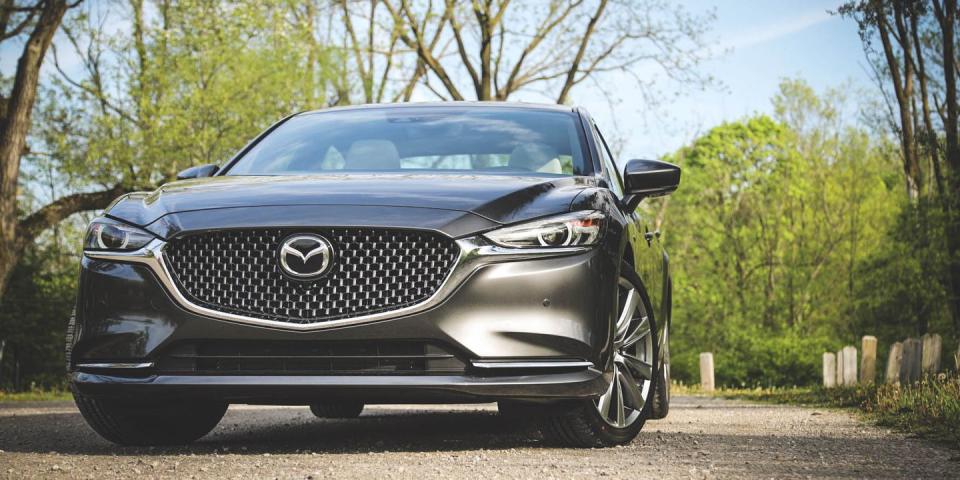
Late in the process of proofreading the July issue of Road & Track, we noticed three of our four major features referenced the Mazda Miata. We’d compared it to, in ascending order of absurdity‚ a Citroën 2CV, a performance SUV, and a sprint car. A sprint car. Point being, we love to uphold the Miata as the gold standard, even when it makes absolutely no sense to do so.
Mazda itself has the same tendency. Witness the last Mazda 6, introduced for 2014. It was a family sedan that had the same dynamic sensibilities as the little roadster-effervescent steering, crisp handling. Also, however, some of the same drawbacks, like a relatively noisy cabin and weak engine. We loved it of course, recommending it to anyone shopping for a midsize sedan, most of whom nodded politely and bought an Accord.
For the refreshed 2018 Mazda 6, Mazda’s talking less of Miatas and more about Amati. Amati? Yes, Amati. The luxury brand Mazda almost launched in the 1990s. The focus is on a more premium experience, which means higher interior quality and less noise.
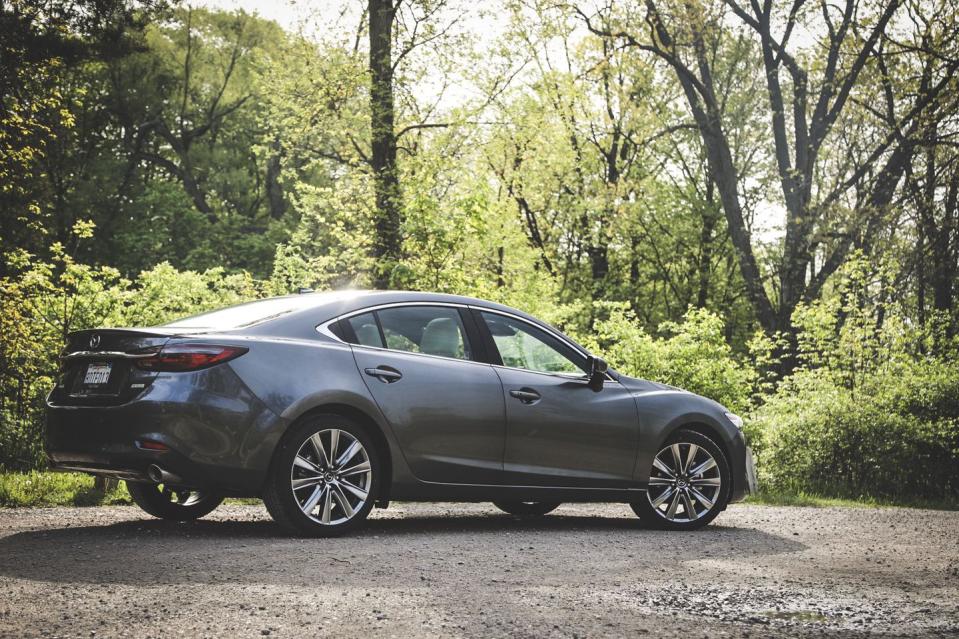
The interior improvements are hard to miss, at least in the loaded, $36,040 Mazda 6 I drove. It had supple white leather and was trimmed in suede-like microfiber and open-pore wood. Midsize sedan interiors have, on the whole, become a lot better of late. Even the Toyota Camry’s cabin, which used to look squeezed out of a tube, now boasts stitched-this and soft-touch that. What distinguishes the 6 is how substantial everything looks and feels. Knurled aluminum switchgear operates with precision. Slight unevenness in the dash stitching tells your brain that this is actual thread, rather than a plastic molded facsimile. Floor mats are deep pile and remind me of-this will sound crazy-a Maybach. Really, really nice stuff, in other words.
The last 6’s only genuine flaw was cabin noise-at highway speeds, you’d raise your voice to carry on conversation. That’s been addressed here with a quieter tire and thicker sheetmetal in the floorpan and rear wheel wells, along with a laundry list of smaller tweaks. (A few examples: acoustic glass laminate on all but the base model, new b-pillar trim, lowered windshield wipers, and more than a few strategically placed pieces of sound deadening material.) The improvement is unmistakable, and makes the whole car feel more expensive.
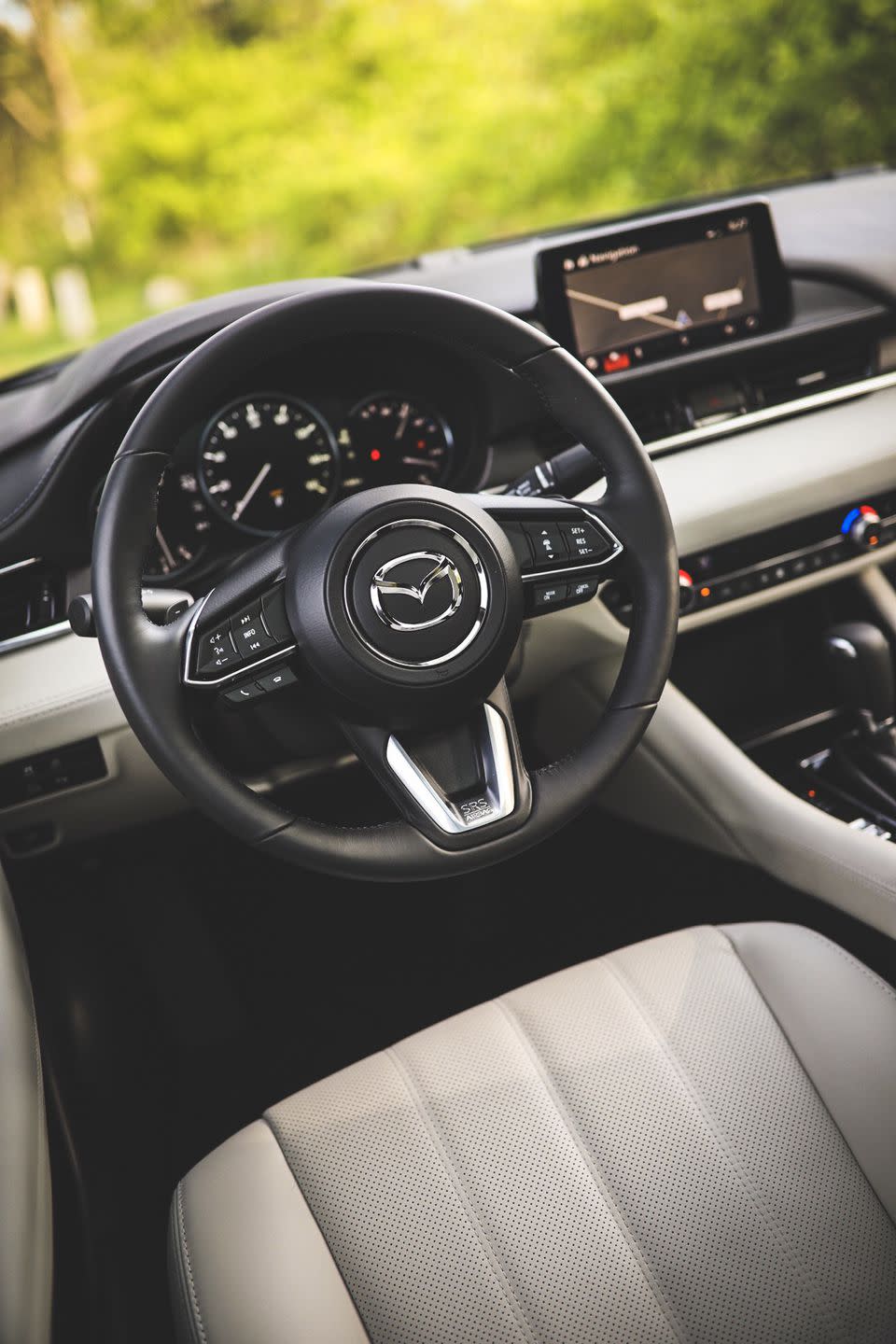
Fixing an issue like road noise is relatively easy. The trouble arises in the tradeoffs, not always foreseen, that arise when engineers alter a car’s character to satisfy customer complaints. (Our man Bob Lutz recently wrote an entire column about this.) In the case of the 6, the problem was that the tires’ quietness came at the expense of grip and feedback. You know, the stuff that made the 6 appealing in the first place. To restore the lost joie de vivre, Mazda changed the front suspension geometry, re-tuned the dampers and bushings, and eliminated the bushings between the steering rack and the front subframe. All pretty standard suspension tweaks, it’s worth pointing out. Yet compared to most automakers-certainly the ones selling mainstream sedans-Mazda seems to have a better sense of the feel it’s looking for.
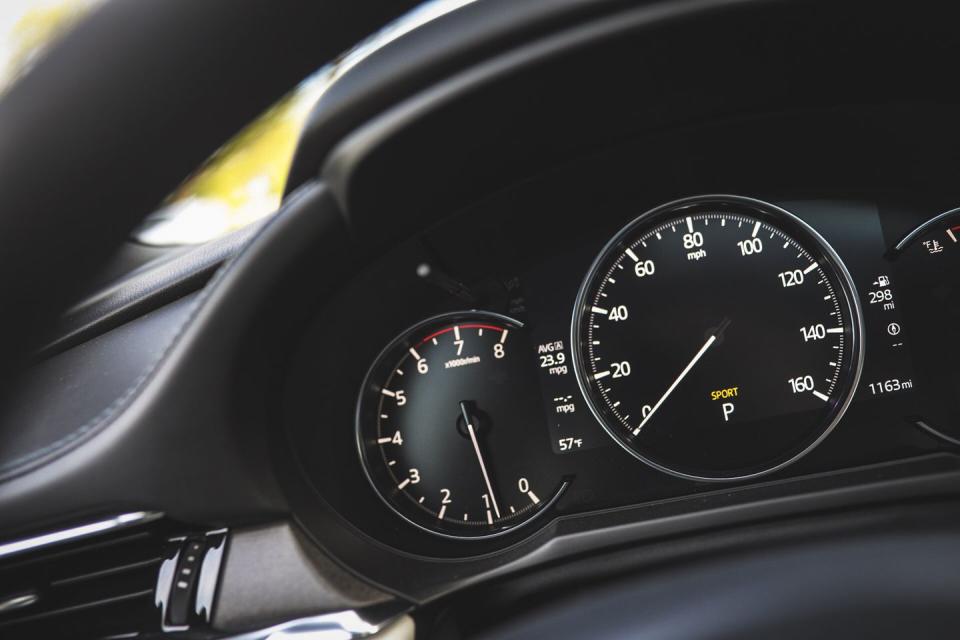
So, the 6, after all the changes, drives a lot like the old one. That means a firm but settled ride; a natural and progressive buildup in steering effort as you wind into a turn; brakes that modulate based on how hard you press them, rather than how far. The 2.5-liter turbo four, same as the one in the CX-9, isn’t a screamer-310 lb-ft of torque comes on at just 2000 rpm and 250-hp (227-hp on 87 octane) at 5000 rpm. Yet its matched perfectly with Mazda’s six-speed automatic, which never hunts or leaves you hung out in a higher gear than you want. The experience is not-repeat, not-like driving a Miata. I drove my ’93 right after just to be sure. But it’s engaging and nuanced all the same. Those who’ve spent time in older Acura sedans may recognize its marriage of a mature ride with taut steering and handling.
Indeed, it’s all reminiscent of ’90s Japanese luxury cars, which overcompensated for their lack of prestige by trying harder at everything. That early effort elevated brands like Acura and Lexus to near parity with European rivals. Mazda’s Amati, on the other hand, never got off the ground. Driving in serene silence, with Mazda development engineer Dave Coleman riding shotgun, I venture that these days, most Americans don’t associate Mazda with luxury.
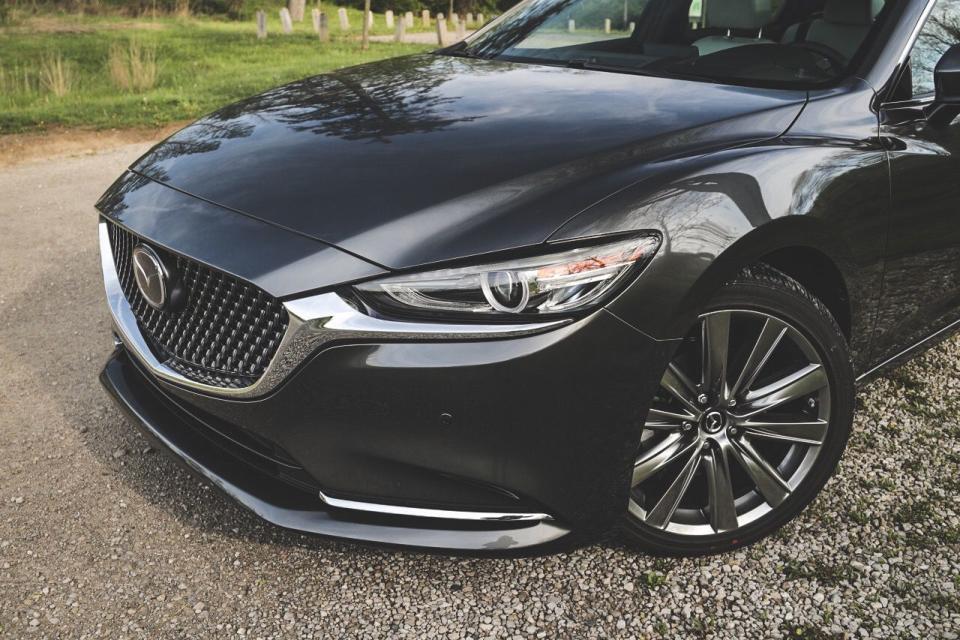
He corrects me: Most people don’t associate Mazda with anything.
It’s a sobering reminder. In our enthusiast corner of the universe, Mazda is a giant. The Company That Makes The Miata. But in the grander scheme of things, it’s a small, relatively obscure company trying to survive in an industry that, more than ever, favors economies of scale. It sold slightly fewer cars in the United States last year than the BMW brand, which charges more for (and, presumably, makes a higher profit from) nearly everything it makes. A nicer midsize sedan won’t dramatically turn those fortunes, but it should help Mazda live to fight another day. Which, for those of us waiting with bated breath for every Miata update, is all that really matters.
You Might Also Like

 Yahoo Autos
Yahoo Autos 